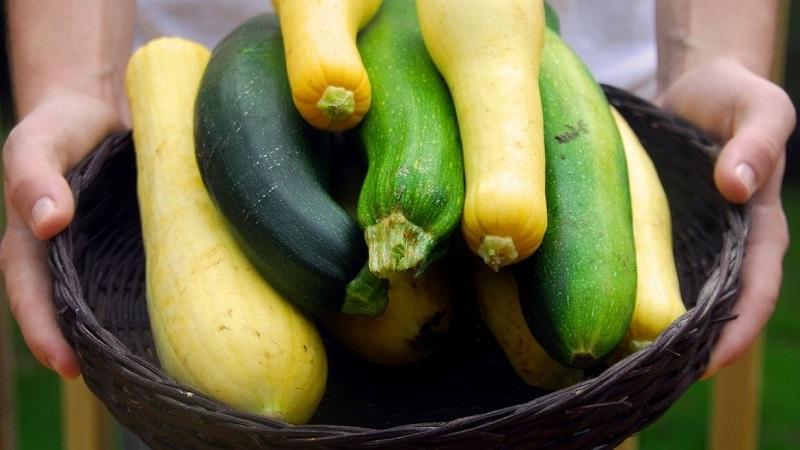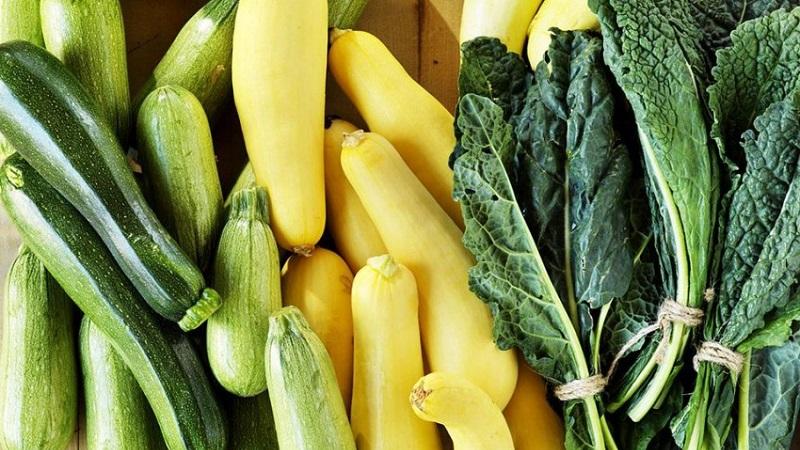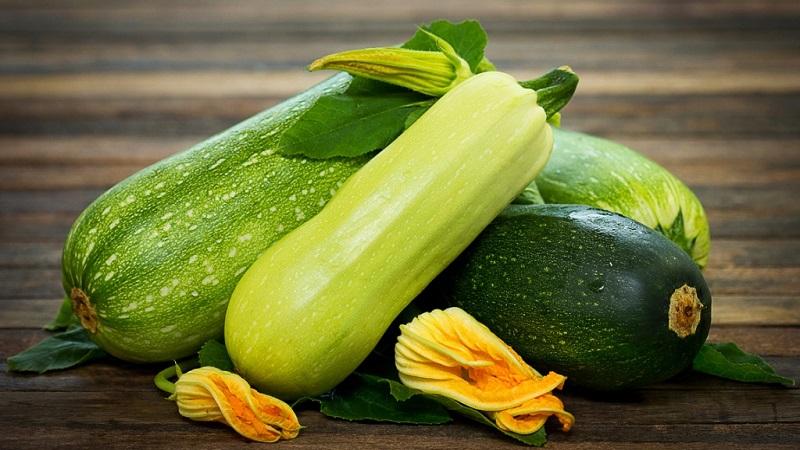What is the difference between zucchini and zucchini in appearance, taste and other properties: we understand in detail and no longer confuse
Everyone is familiar with such a plant as squash. There is also a vegetable on the shelves that looks like it - zucchini. Both were brought to Europe in the 17th century, but they ended up in Russia only in the 19th century. Many are interested in the question, are these plants the same or are they different? What is the difference and similarity between them? You will find the answers to these questions in our article.
The content of the article
What is zucchini
Zucchini belongs to the pumpkin family - common pumpkin... He came to Russia from Turkey. It is characterized by oblong fruits. They can be yellow, white, light green. It is eaten mainly after heat treatment.
Grows well both in greenhouses and in the open field.

What is zucchini
Zucchini is a type of zucchini with green fruits... They can also be yellow, sometimes striped in color.
Originally grown in Italy as an ornamental plant... Only in the 18th century, zucchini began to be used as food. The name comes from the Italian word zucca, which means "little pumpkin". They came to Russia only in the second half of the 20th century.
Eaten processed and raw.
This vegetable is picky about temperature and sunlight.... Even 2 ° C is enough for the plant to freeze, while its relative, the squash, can withstand even small subzero temperatures.
Read also:
What is the difference between zucchini and zucchini
Even though they are two different plants, they have a lot in common and are very beneficial.... They contain such useful components as vitamins C, PP, B1, B2, B6, carotene, iron, potassium. Zucchini contain a lot of vitamin C.
Next, consider how zucchini and zucchini differ.
Composition and properties of fruits
The content of nutrients in these plants is almost identical.... The only difference is that zucchini is absorbed faster. They are composed of fats, carbohydrates, proteins, and acids. Of the mineral components they contain magnesium, iron, manganese, sodium, calcium.
The appearance of plants and fruits
Zucchini grows in the form of a bush with upturned leaves... They are larger in size than a squash and have a richer color. Their flowers are also brighter and larger than those of their fellow. Fruits are often dark green, sometimes striped or speckled. In both vegetables, they are oblong, but in zucchini they grow up to a maximum of 25 cm.
Zucchini lets out whips that spread along the ground... Their color is light green. The fruits are white, light green, yellow. Large ones grow in length, especially if you remove other ovaries, which will not work with zucchini. Even if all ovaries are removed, they will not grow larger than usual.
Reference. Unlike ordinary squash, zucchini is a precocious fruit. They collect it in June. Zucchini ripens until September.
Availability of seeds
Zucchini and zucchini can be distinguished by their seeds... In the first, there are a lot of large seeds that should be removed before cooking. In the second, they are small and invisible, so they cook it with them without taking it out.
Taste qualities
In zucchini, especially in adults, the flesh is dense and does not have a pronounced taste.and also has a tough skin. Therefore, they are consumed only after heat treatment.During the cooking process, the product becomes tasty due to the interaction with other vegetables or meat.
Zucchini have a thin skin and delicate tasteso they can be eaten raw along with the skin. They are often added to various salads. Also, the vegetable can be heat treated, but minimal, because with prolonged exposure, they boil into porridge.

Storage and transportation
These vegetables differ from each other in keeping quality.
Thanks to its thick skin, the zucchini can be stored until spring in a cool and dark room.without losing nutritional and taste qualities. It is advisable to store it at a temperature of 3-10 ° C and a relative humidity of 60-70%.
Zucchini, on the other hand, can be stored raw for up to 5 days.... They retain their taste best when frozen.
Allowed for transportation are clean, fresh, without mechanical damage and damage from diseases and pests.... Sorted by maturity. Vegetables are transported in a closed container, folded along the level of the edges so that they do not bang or rub against each other. In the case of transportation in a carriage, the floor and walls are covered with straw with a layer of 10 cm.
Note. Zucchini and zucchini cannot be transported together due to the difference in shelf life and softness of the peel.
The benefits and harms of zucchini and zucchini
Given their identical composition, the positive effect on the body of these vegetables is also similar... Juice and pulp are used in cosmetology - they have a rejuvenating effect. The juice is also used in hair masks to slow down the aging process.
The presence of folic acid makes them useful during pregnancy... Eating these vegetables in food reduces pain in rheumatoid arthritis.
Plants have a strengthening effect on bones due to their high manganese content... Their low calorie content and the presence of fiber make them a dietary product: the calorie content of zucchini is 23 kcal per 100 g, zucchini is even less - 16 kcal per 100 g.
Regular consumption of these vegetables supports eye health and helps fight age-related changes.
Zucchini and zucchini lower cholesterol levels, have anti-inflammatory and antioxidant effects, and are beneficial for cancer prevention... The manganese and vitamin C contained in them are beneficial for the heart and blood vessels.
Vegetables remove toxins and toxins, have a positive effect on the urinary and cardiovascular systems.
Caution! Given the presence of acids, these vegetables are undesirable for people with kidney failure and gallbladder diseases. They can lead to the occurrence of urolithiasis. In case of diseases with disruption of the digestive tract, it is better to use them in a boiled form. In their raw form, they can exacerbate stomach ailments.

Cooking applications
Both vegetables can be eaten boiled, stewed, fried and baked... They do not have a pronounced taste, therefore, when cooking, they absorb the aromas of other products and complement them.
Zucchini are more suitable for canning, in this case they reveal their taste better. They make wonderful pancakes and the well-known squash caviar. They can be stuffed with meat, cottage cheese and even fish, stew with vegetables as a side dish and main course.
Zucchini, thanks to its delicate pulp and pleasant taste, is used fresh... Salads and light meals are prepared from them. Young fruits up to 15 cm long are suitable for this. They also make a wonderful soup. In addition, zucchini can be baked with meat, vegetables, cheese, they are also used in the preparation of desserts.
It can be useful:
Conclusion
Zucchini and squash are different plants, but they belong to the same pumpkin family. They are similar in fruit shape and plant appearance. The beneficial ingredients are also almost identical, so vegetables have a similar effect on the body.The differences lie in the size, color and keeping quality of ripe fruits, skin thickness, number of seeds and predominant use.
In cooking, zucchini and zucchini are used interchangeably, but there are dishes where only a certain vegetable is desirable. Young zucchini weighing no more than 700 g and less than 25 cm long can successfully replace raw zucchini.